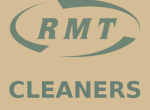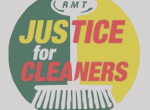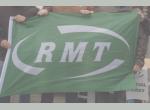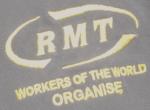Jobs ‘at risk’ in UK railway industry resulting from government proposals for rail reform
Introduction
In our briefing on the government’s Rail Command Paper, rail unions involved in the Action for Rail campaign indicated that over 20,000 jobs in the UK rail industry were ‘at risk’ as a result of the recommendations in the McNulty Review that Network Rail and Train Operating Companies were being asked to implement.
By extrapolating from the McNulty Review, our briefing indicated the total numbers of jobs at risk broke down as follows:
|
Job type |
Numbers at risk |
|
Non-driver on-train staff |
6,800 |
|
Maintenance, Signalling and Operations Staff |
6,300 |
|
Ticket retail in E and D stations |
2,000 |
|
Station staff |
5,500 |
|
Total |
20,600 |
On Tuesday 19 June, Sir Roy McNulty appeared before the Transport Select Committee. He claimed that the trade unions’ estimates of jobs at risk were exaggerated and that the figure was closer to 6,000.
What does the Sir Roy McNulty say in the final report of the Rail Value for Money study?
The following are direct quotes from ‘Realising the potential of GB rail: the final report of the Rail Value for Money study’ published in May 2010.
Non-driver on-train staff
McNulty says:
“The Study has reviewed the number and cost to the industry of the second member of the train crew employed by most TOCs – known as guards, conductors or train managers – of which there are 6,800.”
McNulty recommends:
“The financial imperatives facing the industry, the need to change radically the cost structure of the industry, and the availability of new communications technology has led the Study to recommend that the default position for all services on the GB rail network should be DOO (Driver Only Operation)”
NR Maintenance, Signalling and Operations Staff
McNulty says:
“The Study understands that, in order to meet its efficiency targets, NR expects to reduce staff numbers over Control Period 4 (CP4) by 6,300. Much of the reduction could come from the maintenance function, with further reductions from investment projects, and from operations staff (signallers and others). This equates to a 17% reduction in staff numbers and is predicted to deliver a corresponding 21% reduction in staff costs.”
McNulty recommends:
“NR employed 8,600 signalling and operations staff at the beginning of CP4. This number should be able to be reduced to 7,600 by the beginning of CP5. NR employed 18,000 maintenance staff at the beginning of CP4, which could be reduced to 14,000 by the beginning of CP5.”
Retail staff in Category D and E station booking offices
McNulty says:
“Around 5,500 staff work on retail activities, of which 37% (approximately 2,000 people) are employed at small- and medium-sized stations.”
McNulty recommends:
“The closure of all Category E station ticket offices; reducing the opening hours at Category D station ticket offices.”
Station staff
McNulty says:
“Excluding those involved solely in retail, a further 5,500 staff work on stations on the platforms or elsewhere in the station environment. Their primary responsibility is dispatching trains.”
McNulty Recommends:
“The Study recognises that TOCs are free to make commercial judgements on the need for dispatch staff within the bounds of their safety responsibilities and recommends that TOCs should review station staffing as a matter of priority.”
Conclusion
Clearly, all these estimates need to be treated with a great deal of caution and we are not claiming that the higher end figures will materialise in terms of job cuts.
However, we are confident that the figures contained within our briefing were an accurate reflection of those job numbers that will be under review or actively targeted for cuts as a result of McNulty recommendations.
Sir Roy’s assertion that we can expect only 6,000 job cuts looks unrealistic given the content of his own report, the figure for Network Rail job cuts in Control Period 4 exceeds that number alone.
Moreover, our figures may also be on the conservative side given that they do not include other groups within the industry such as catering or cleaning workers.
- This is a briefing taken from 'Action For Rail' - find out more on their website here.
- 4483 reads






